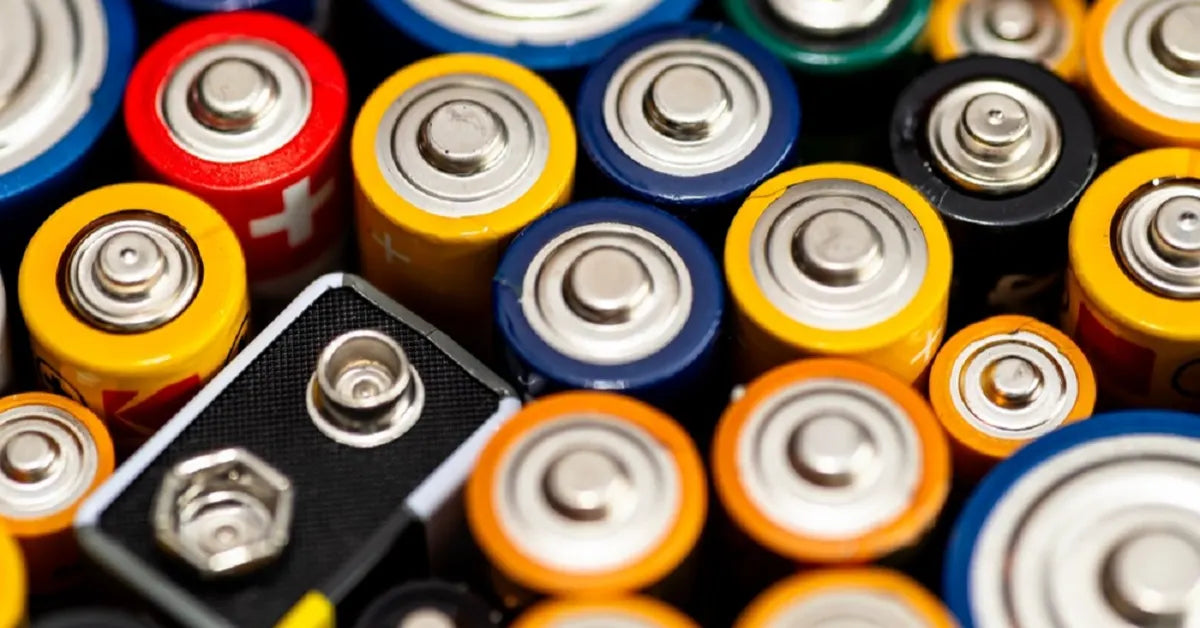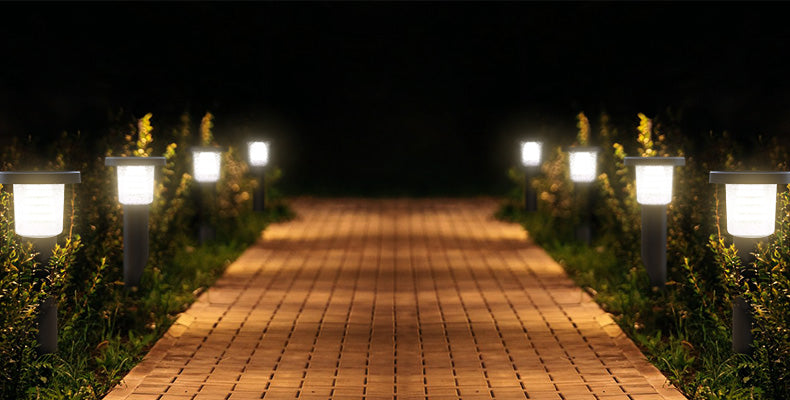The Short Answer: What is the Highest Lumens for Solar Lights?
Solar lighting has transformed how we illuminate outdoor spaces. It's eco-friendly, cost-effective, and incredibly versatile. But when I talk to homeowners and business owners, one question always comes up: "How bright can solar lights actually get?"
The answer might surprise you. The highest lumen output for solar lights can reach up to 40,000 lumens in specialized commercial projects. These are massive solar street or floodlights designed for expansive areas like highways or industrial complexes.
For more common applications, commercially available high-performance solar flood lights typically range between 12,000 and 22,200 lumens. These are what you'll find lighting up parking lots, public parks, and commercial perimeters.
Here's what matters for most of us: everyday residential or small commercial solar lights usually max out around 3,000 to 5,000 lumens. This sweet spot balances serious brightness with practical battery life. Understanding these ranges helps you choose lighting that actually meets your needs without overpaying for power you don't need.
A Practical Guide: Matching Lumens to Your Outdoor Space

I've seen countless customers either under-light their spaces or blast them with way too much brightness. The key is matching lumens to purpose. Let me break down what works where.
| Application | Recommended Lumen Range | Function and Use Case |
|---|---|---|
| Commercial Areas | 5,000 to 20,000+ lumens | Perfect for high-traffic zones like large parking lots, main roads, plazas, and commercial perimeters where consistent, broad illumination isn't optional—it's essential for safety and security. |
| Residential Areas | 100 to 5,000 lumens | This wide range covers everything from gentle path lighting to serious security floodlights. Most residential post lights sit comfortably at 100-400 lumens. |
| Security Lighting | 700 to 2,000+ lumens | This is your deterrence range. You need clear visibility around entry points, driveways, and dark corners. Motion sensor lights typically operate in this zone. |
| Path Lights | 100 to 300 lumens | These provide subtle guidance along walkways, garden paths, and sidewalks. Enough to see where you're going without harsh glare that ruins your night vision. |
| Decorative Lighting | 50 to 200 lumens | Used primarily for ambiance—accenting plants, statues, or architectural features. Think soft, welcoming glow rather than functional visibility. |
| Spotlights | 100 to 1,200 lumens | Focused beams that highlight specific landscape features or architectural details. Landscape spotlights typically use 100-300 lumens concentrated in a narrow beam. |
Beyond Lumens: What Truly Defines a "Bright" Solar Light?

Here's where I need to challenge a common misconception. A high lumen count indicates a bright light source, yes. But achieving effective outdoor brilliance involves much more than chasing the biggest number on the box.
Lumens vs. Watts: Understanding the Difference
Think of it this way: lumens are how bright the light shines, while watts are how much energy it drinks. This distinction is crucial.
Watts measure electrical power consumption. Lower wattage means the fixture demands less from your solar panel and battery. Lumens measure actual brightness—the total visible light the fixture emits.
Here's the game-changer: LED technology delivers significantly high lumens with remarkably low wattage. A modern 15-watt LED can produce the same 1,500 lumens that used to require a 100-watt incandescent bulb. That's why older wattage-based thinking is obsolete for solar lighting.
The Lumen Myth: Why Beam Angle and Lens Quality Matter
I see this all the time: customers fixate on lumen numbers, then wonder why their "3,000-lumen" light seems dimmer than expected. Here's the truth—how light spreads matters as much as how much light exists.
Beam angle determines light distribution. A narrow beam (common in spotlights) concentrates all those lumens into a tight area, creating intense brightness over long distances. A wide beam (found in floodlights) spreads the same lumens across a broader area, resulting in lower intensity at any single point.
Consider this real-world scenario: a 4,000-lumen light with a narrow 30-degree beam might seem less bright for general area lighting than a 3,000-lumen light with a wide 120-degree flood beam. The total light is higher, but it's all concentrated in one spot rather than washing across your entire yard.
Lux is actually what you experience—it measures light intensity reaching a specific surface (lumens per square meter). Achieving the right lux level on your walkway matters more for safety than simply having high total lumens. Quality lens design ensures even light distribution without dark spots or harsh glare zones.
The Engineering Challenge: Balancing Brightness with Battery Life
Here's the reality check: producing high lumens demands serious energy. This creates the fundamental challenge in solar lighting design.
The efficiency metric that matters is lumens per watt (luminous efficacy). Higher numbers mean you're getting more light from less power. Modern high-quality LED chips can achieve 150-180 lumens per watt, which is critical for solar applications.
But there's a catch. Achieving 4,000 lumens requires a substantial solar panel to capture enough daytime energy and a battery large enough to store it. If the battery capacity is too small, you'll see dramatic brightness drops through the night as the controller reduces LED power to stretch available energy.
This is why intelligent controls matter so much. Dimming features and motion sensors help manage this trade-off by engaging high brightness only when necessary, conserving battery power for all-night operation.
The Pinnacle of Residential Security: Achieving and Controlling High Brightness

For homeowners who want professional-grade illumination without industrial-scale complexity, modern high-lumen solar floodlights represent the perfect solution.
Delivering Professional-Grade Power: The 4000-Lumen Benchmark
A 4,000-lumen output sits at that ideal intersection of intensive illumination and residential practicality. This benchmark delivers the visibility needed for serious security and complete coverage of large backyards or driveways. It's the same brightness level used for secondary roads and commercial parking areas—professional performance scaled for home use.
We're not talking about marginal improvements over standard lights. 4,000 lumens provides daylight-level visibility that transforms dark spaces into secure, usable areas after sunset.
The Importance of Control: Why a Remote with Dimming is Essential
Here's something critical: raw power without control is actually a problem. A light that's bright enough for security can be overwhelming for ambient evening use.
Dimming capability changes everything. You need the ability to set 100% brightness when security matters, but dial down to 60% or 80% for comfortable outdoor dining or entertaining. Preset modes let you switch between longer runtime at lower brightness and highlight mode for maximum visibility.
Motion sensors add another layer of intelligence. The light can idle at ambient levels, then instantly flood the area with full brightness when movement is detected. This conserves massive amounts of energy while maintaining security effectiveness.
The Power Behind the Light: The Role of a 20,000mAh Battery
A massive 20,000mAh battery capacity is what makes sustained high-brightness operation possible. This isn't just about bigger numbers—it's about reliability. The battery must power the fixture through entire nights, even after cloudy days limit solar charging.
Quality lithium-ion batteries are essential here. They charge faster, discharge more consistently, and maintain capacity through hundreds of charge cycles. This is the difference between a light that works reliably for years versus one that dims noticeably after the first season.
When you combine 4,000 lumens of output, intelligent dimming controls, and substantial battery capacity, you get something genuinely different: a professional-grade 4000-lumen security light engineered for residential use.
The Game-Changing Feature: Linkable Technology
Here's where we move beyond individual lights into true security systems. Linkable technology allows multiple high-lumen fixtures to communicate and coordinate. When one sensor detects motion, all linked lights activate simultaneously.
Imagine this: instead of lighting just the corner where movement occurs, your entire property perimeter floods with 4,000 lumens from multiple angles. This creates a "wall of light" that eliminates shadows and dark spots where threats could hide.
This is intelligent use of high brightness. intelamp's linkable flood light system uses 210 high-quality LED beads across each fixture, controlled by a single remote that manages the entire network. You can set coordinated schedules, adjust brightness across all units simultaneously, and create sophisticated lighting scenarios that adapt to your needs.
Explore High-Performance Outdoor Lighting
The solar lighting market has evolved dramatically. What's possible now—in terms of brightness, control, and reliability—would have seemed impossible just a few years ago.
Whether you need subtle path lighting, decorative accents, or serious security illumination, understanding lumens helps you make informed choices. The highest lumen solar lights reach commercial-grade performance while remaining practical for residential installation.
Ready to explore our full range of solar outdoor lights? You'll find solutions engineered for real-world performance, from ambient path lights to professional-grade flood systems that deliver genuine security.
FAQs
How many lumens should a good solar light have?
The answer depends entirely on purpose. A good solar light for ambient or pathway lighting should deliver 100 to 300 lumens—enough to guide foot traffic safely without harsh glare. A good solar light for security or floodlighting needs 700 lumens or more, with premium residential security lights reaching 3,000-4,000 lumens.
How bright is 4000 lumens outdoor?
4,000 lumens provides high-intensity illumination comparable to what's used for secondary roads, large public parks, and commercial parking lots. In residential terms, it's bright enough to illuminate an entire backyard with daylight-level visibility. This brightness ensures clear sight lines across large areas, making it excellent for security applications where you need to eliminate dark hiding spots.
Is 3000 lumens too bright?
3,000 lumens is appropriate for functional applications like parking areas or commercial spaces. It's definitely too bright for soft, decorative lighting (which uses 50-200 lumens). For residential security floodlights, 3,000 lumens works well but benefits from dimming capability to avoid glare during casual evening use. Context and control make all the difference.
How bright is 5000 lumens outdoor?
5,000 lumens delivers high-intensity illumination suitable for commercial areas, large plazas, or main road lighting. This level ensures broad, consistent coverage over extensive areas. For residential use, 5,000 lumens is typically more than necessary unless you're lighting very large properties or need commercial-grade visibility for specific security concerns.
You might Like
Do Solar Lights Need Direct Sunlight? The Complete 2025 Answer
How Long Do Solar Lights Last? Engineer's Guide to Durability (2025)



